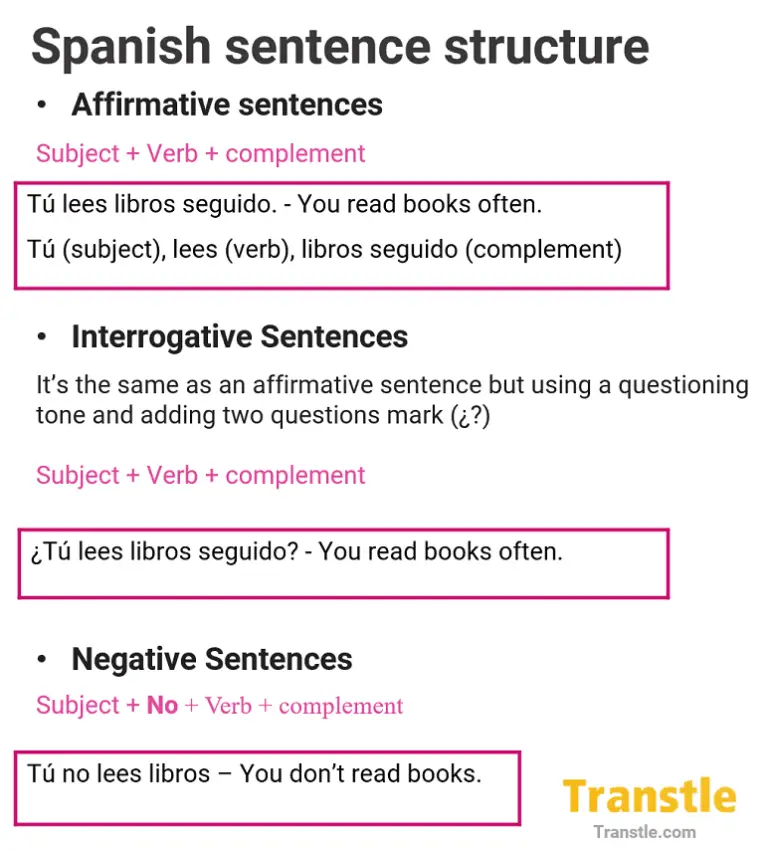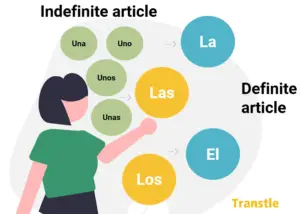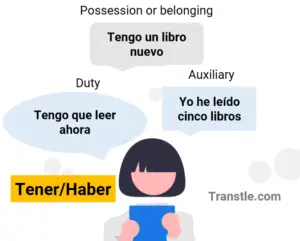Spanish Sentence Structure
Introduction
A sentence is a fundamental element of communication that expresses a message, and its structure is the order that the words must follow to express a clear message. In Spanish, sentences can take on three main forms: affirmative, negative, or interrogative, with the most common being the affirmative form, which follows a subject + verb + complement structure.
Example:
“Él come manzanas” translates to “He eats apples,” where “él” is the subject, “come” is the verb, and “manzanas” is the complement.
This basic structure provides a strong foundation for constructing more complex sentences by adding modifiers, adjectives, adverbs, and other grammatical elements to convey more precise meanings and nuances.
Contents
Elements of the sentence
A sentence in Spanish consists of three basic elements: subject, verb, and complement:
- Subject: It’s the person, animal or objects that executes or experiences the action.
- Verb: It’s the action, movement, or state that the subject performs or experiences. Such as “To live”, “To eat” “To feel”, etc
- Complement: The part of the sentence that provides additional information about the subject or the action, such as qualities or specifications. For instance, in the sentence “I put the coffee on the table“, “on the table” is the complement.
See also: Spanish Subject Pronouns
How to form sentences in Spanish

Affirmative sentences
To form an affirmative sentence in Spanish, you need to follow a basic structure that consists of subject + verb+ complement
|
| Subject | Verb | Complement |
| Yo | adoro | la comida italiana |
| Mi abuela | olvidó | las llaves de la casa |
| El jardín | se ve | fantástico |
Interrogative Sentences
An interrogative sentence in Spanish is formed by following the same basic structure as an affirmative sentence but using a questioning tone and adding two questions marks, one at the beginning and one at the end.
Subject + Verb + complement
|
Question marks
In Spanish, question marks should be placed at the beginning and end of an interrogative sentence to indicate that it is a question. The opening question mark is an inverted question mark (¿), and the closing question mark is a regular question mark (?). This is known as the “Spanish question mark” and is used to differentiate questions from statements.
Negative sentences
Negative sentences in Spanish are formed by adding the word “no” before the verb in an affirmative sentence. Here’s how to form a negative sentence:
Subject + No + Verb + complement
|
| Subject | No | Verb | Complement |
| Nicolas | no | entiende | la información |
| Yo | no | se | lo que preguntas |
| La lluvia | no | para | todavía |
Agreement in gender and number
If the noun is accompanied by an article (La, el, los, las, uno, una, unos, unas) and/or an adjective, they must agree on gender and number.
|
Quiz and exercises
Practice what you learned with the following exercises.
Part 1
- What are the three basic elements of a sentence in Spanish?
a) Pronoun, verb, complement
b) Subject, verb, complement
c) Noun, adjective, adverb - What is the basic structure of an affirmative sentence in Spanish?
a) Verb + subject + complement
b) Complement + verb + subject
c) Subject + verb + complement
- How do you form a negative sentence in Spanish?
a) Add the word “no” before the verb
b) Add the word “sí” before the verb
c) Change the verb to its opposite
- What is the correct way to write a question in Spanish?
a) Start with a question word and end with an exclamation mark
b) Start with an inverted question mark and end with a regular question mark
c) Start with a regular question mark and end with an inverted question mark
- Why is it important to ensure that nouns, articles, and adjectives agree in gender and number in Spanish?
a) It makes the sentence sound more formal
b) It’s a grammatical requirement of the Spanish language
c) It’s a cultural tradition in Spanish-speaking countries
Part 2
- Identify the basic elements of the following sentence in Spanish: “Ella canta en el coro.”
- Rewrite the following affirmative sentence in Spanish as a negative sentence: “Yo como pizza.”
- Write the following question in Spanish: “Do you like to dance?”
- Fill in the blank with the correct form of the verb “ser”: “Mi hermano y yo _____ estudiantes de español.”
- Fill in the blank with the correct form of the adjective “bello”: “El jardín tiene muchas flores ______.”
Read next



